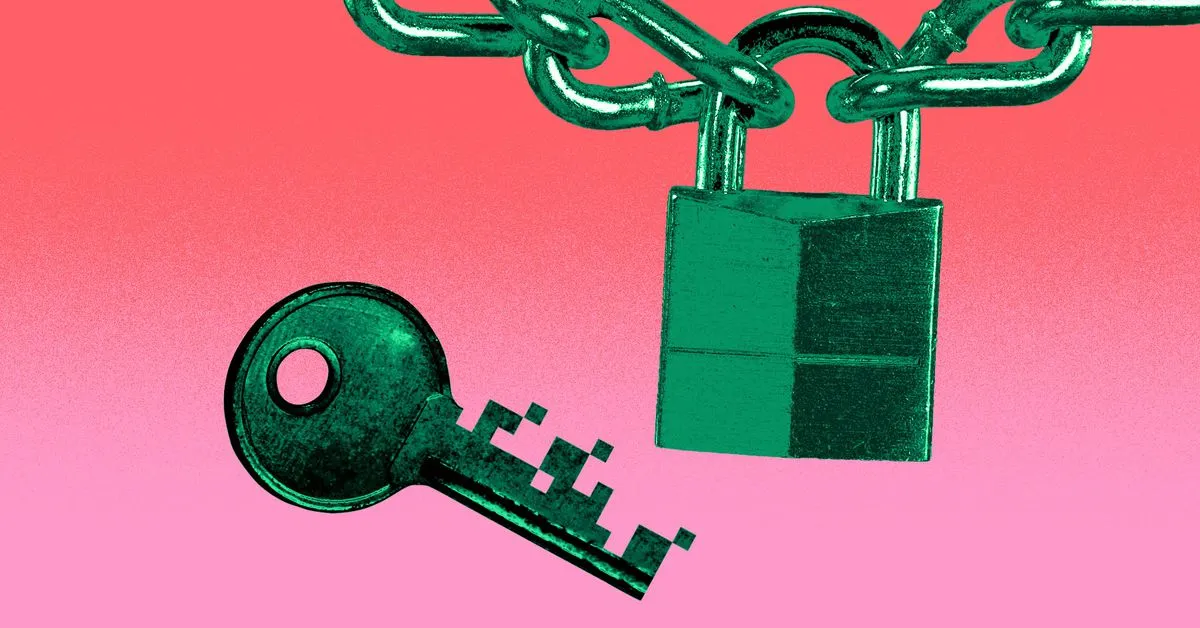It is a time for a single linux boot.
I never did dual boot. The first time moving from windows 2000 to Linux, my hard drive was only 2 GB and I couldn’t fit both of the OS:es on it, so I nuked the windows one.
 No surprises there, just the usual shit
No surprises there, just the usual shitClassic
So they were trying to patch systems that use GRUB for Windows-only installs? What a load of BS. Why would anybody install GRUB to boot only Windows with that? Or am I overlooking something?
Furthermore, if GRUB has a security issue, they should’ve contributed a patch at the source instead of patching it themselves somehow. I’m a bit stunned at the audacity of touching unmounted filesystems in an OS patch. Good thing Windows still doesn’t include EXT4 and BTRFS drivers because they might start messing with unencrypted Linux system drives at this rate
deleted by creator
What is that latter fallback called? I set up my boot manually using an EFI stub last time I installed arch but wasn’t aware of any fallback bootloader
[This comment has been deleted by an automated system]
Thanks for the detailed explanation, makes a lot of sense! I guess what I did was set up a UEFI entry that specifies the location of the Linux kernel without any intermediate bootloader. Pretty sure I didn’t set the fallback, so I’m guessing that’s still owned by windows.
[This comment has been deleted by an automated system]
I agree they should have sent a patch to the grub source, but keep in mind big software companies like microsoft, Verizon, … do not normally allow their product teams to send a patch or PR to open source projects. This is because in their contract it states that all code written on and during company times is owned by the company. This means that it is impossible for them to make a patch or PR because it would conflict with the projects licence and fact its open source.
This changes when the team explicitly works on the foss product/project like the ms wsl team or the team working on linux supporting azure hardware, but that is an exception. I do not believe the microsoft kernel/bootloader team is allowed to send patches to grub.Its a terrible thing, and it shouldnt be, but thats the fact of the world atm.
What? Microsoft have written and released and contributed to many open source projects - they created vscode for one. They are even one of the top contributors to the Linux kernel.
Yes, but not all devs within microsoft are allowed to work on non-ms foss projects. I assume wsl devs are allowed to send stuff to linux but visual studio devs probably are not.
The wrote and released VS Code - a completely opensource development environment. If they wanted to patch Grub I bet they could have found the permissions internally to do that. Microsoft is a lot more open to OSS contributions then they were in the past.
Not saying youre wrong, but you took the wrong project as an example hehe.
Visual code is not open source. Its core is, but visual code isnt. The difference is what visual code ships with, on top of its core.
Its like saying chrome == chromium ( it isnt ).Visual code comes with a lot of features, addins and other stuff that isnt in the core.
.net debugger for example, is not found in vscodium ( build of the vscode core ). And there is more stuff i cant think of now but have come across. Source: been using vscodium for a few months instead of vscodeSure, my bad. But it does not change my point. They have released stuff as opensource even if not all of it. Which means they can if they want to.
I know, hence why i said youre not wrong but the example was wrong :p
Also, its more complex than that. Some teams can, some cant. And if they can it all depends on what project or context. The business world isnt that cut and dry hehe
If you need to dual boot, be sure to use separate EFI partitions for windows and Linux, separate drives if possible. Windows has done this far too many times.
Just remove Windows. One problem less on the list.
Remove your Microsoft installation, done.
Yes but…
But what? This is Microsoft, they fucked it up so many times that it’s either incompetence or sabotage, and knowing Microsoft, it’s probably both.
This is the same company that invented millions to sabotage Linux through the legal system (hello sco), and the same company that in purpose left gaping security holes open as to not lose any money, causing China to hack the US government through said holes.
Then we decide that just that money isn’t enough so we’ll spy on you at every step of the way, we will force feed you ads, and we’ll use you to train our shitty AI
Frack Microsoft, frack any and all of their software.
This is a regular occurrence and honestly we need to stop recommending dual boot. Use separate drives if you need to, but sharing the same drive is destined to brick something
But having 2 drives does not solve the boot loading issue, I mean, even if you have two drives, you still have only one bootloader, not?
No. You can have more than one EFI system partition with separate bootloaders on each drive and set their boot order in the BIOS, just like booting from USB or anything else.
This is also possible with just one drive. The efi boot entries for each OS are stored separately in the efi system partition.
EFI can also live in firmware memory.
You can pull the linux drive, boot from the windows drive, and if one of the firmware updates was for efi, windows will trash the entry for your Linux disk.
This has happened for me many times, I had to use a grub rescue disk to rebuild the efi table.
The boot entries live in firmware yes, efibootmgr can create and remove them. The are pointers to the bootloader. Many systems can boot from the disk itself without the entry, the entry just makes it pretty (“Fedora” instead of NVME1).
I’m not exactly sure what you’re suggesting. Isn’t that more or less what I just said?
Somewhat. One, a system can be bootable without the entries because they are just pointers to the actual bootloader, so even if windows does the stupid and deletes them it isn’t the end of the world. It does depend on your specific firmware though.
Also two, you can write them again with a single line in efibootmgr, they’re just saying “if I click Fedora load the shim from the EFI system partition on disk 1”.
This is very different than the old world where windows would delete your bootloader entirely and the MBR couldn’t be easily explored. They live in the efi system partition instead - or at least the shim does- and typically every OS leaves the other ones alone (even Windows, except in this case, although it didn’t touch the shim itself).
The initial comment was about the bootloader and really only applies to MBR partitions.
Does having Linux and Windows on seperate drives mitigate this issue somewhat?
Wanting to start dual booting and moving to windows. Wondering if that helps at all.
Edit: I meant moving to Linux… >.>I keep Linux and windows on separate disks, grub or windows boot manager don’t know about each other. I have the Linux disk as the primary boot, if I need to boot into windows i use the bios boot selection screen. It’s a bit of a pain at times(have to mash F12 to get the bios boot menu) bit it’s less of a headache than trying to fix grub
I took this approach as well but I let Grub add Windows as a boot option. No mashing keys at post and Windows doesn’t get to touch Grub or Debian.
I have considered adding windows to grub, but these days I hardly boot into windows so there is probably not much point.
So, excusing my ignorance as a fairly recent Linux convert, what does this mean for my dual boot system?
I haven’t booted windows for weeks and am pretty sure there have been no updates since it was freshly reinstalled (maybe 6 months ago) as a dual boot with Debian.
Is this only a problem if I allow Windows to update?
Are Microsoft likely to fix the issue in a subsequent release?
FWIW, I’m dual-booting windows and mint atm. Separate drives, but just one EFI partition, and this update hasn’t borked things for me.
I put windows in the shame box (VM).
I recently discovered that Rufus has an option to set up a Windows ISO as “Windows on the go” so I dug out an old 500Gb SSD that had a USB adapter with it and installed Windows on that. So now instead of dual booting I can just hit F12 and boot from USB on the rare occasions when I need to run something in Windows.
It’s also quite satisfying to be able to physically remove Windows and shove it into a drawer when it goes full Windows too lol.
God, I’d have a back up in case I went full office space.
I pretty much did just go full office space on it lol. Here’s a fun thing I just learned:
Windows 11 apparently defaults to a tiny fraction of space for system restore points, and if it runs out of space it just deletes the old ones without asking or telling you. Because it defaults to a tiny amount of space, it apparently only ever keeps one system restore point on hand.
This means I made a manual one on a clean install when I’d got my settings sorted, so I can hop back to that when Windows inevitably fucks up. But because it’s Windows, what it did was apply a big update, fuck it up, then save that fuck up as the only restore point.
I restored it anyway just to see what would happen, and that broke even more stuff. Back in the drawer!









